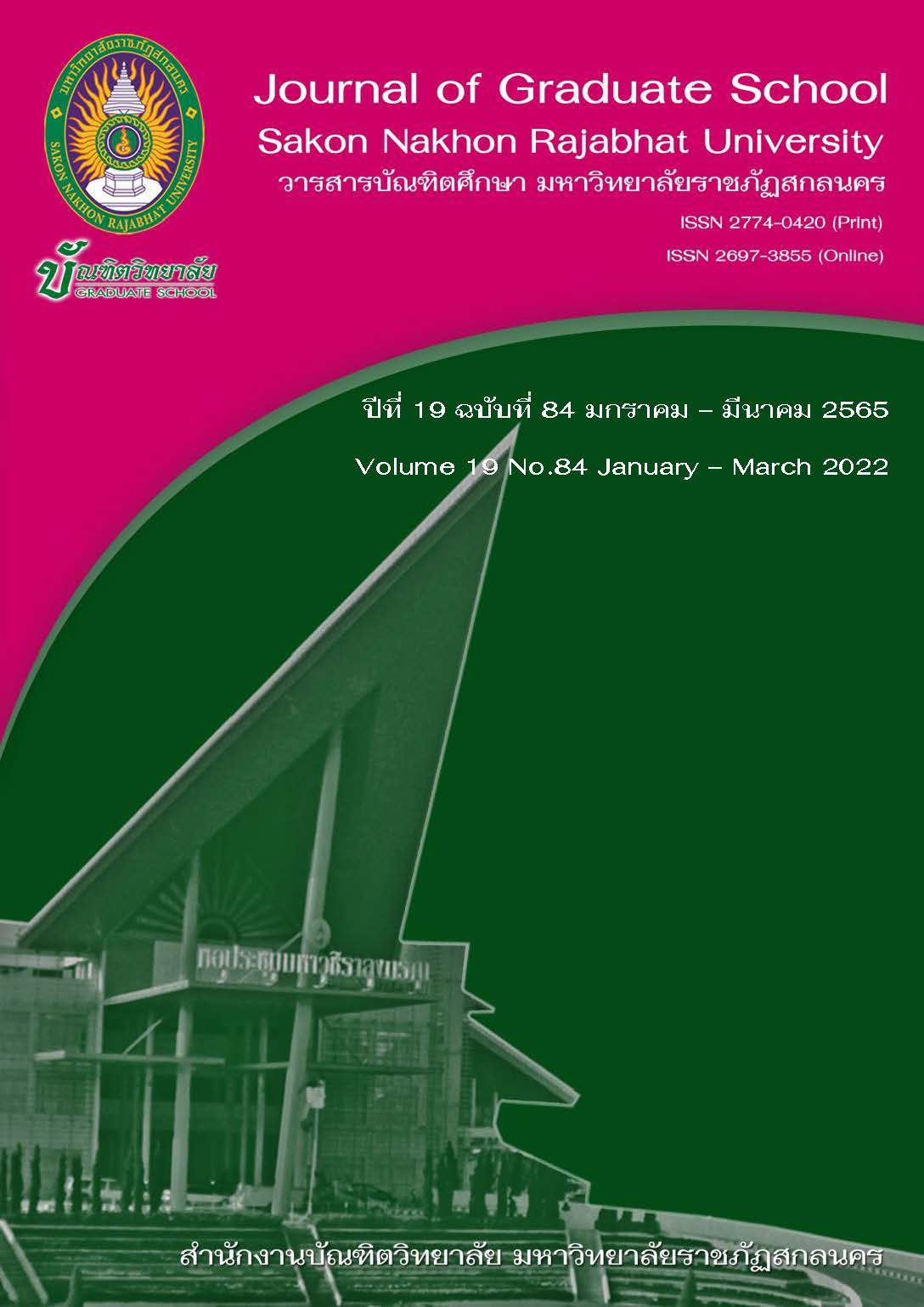กลวิธีความสัมพันธ์ของคำถามและคำตอบกับความเข้าใจในการอ่าน
Main Article Content
Abstract
Reading for comprehension is a process in which a reader uses background knowledge and prior experiences to understand the content of the text. To advance reading comprehension, the significant influencing factors must be examined thoroughly in terms of readers, reading texts, and activities. Question-Answer Relationship (QAR) is a reading comprehension strategy to encourage learners to build comprehension in reading texts by themselves using two types of questions: 1) In the Book consisting of Right There, and Think and Search, and 2) In my Head consisting of Author and Me, and On My Own. The four types of questions are the principles of QAR reading activities designed to develop reading for comprehension, higher-order thinking skills, collaboration, and communication of learners’ skills in the 21st century.
Article Details

This work is licensed under a Creative Commons Attribution-NonCommercial-NoDerivatives 4.0 International License.
บทความทุกบทความที่ตีพิมพ์ในวารสารบัณฑิตศึกษา มหาวิทยาลัยราชภัฏสกลนคร ถือว่าเป็นลิขสิทธิ์ของบัณฑิตวิทยาลัย มหาวิทยาลัยราชภัฏสกลนคร
References
ทิศนา แขมมณี. (2563). ศาสตร์การสอน: องค์ความรู้เพื่อการจัดกระบวนการเรียนรู้ที่มีประสิทธิภาพ. กรุงเทพฯ: สำนักพิมพ์จุฬาลงกรณ์มหาวิทยาลัย.
รื่นฤทัย สัจจพันธุ์. (2549). การสร้างนิสัยรักการอ่าน ใน สุนทรียภาพแห่งชีวิต, (หน้า 180-192). กรุงเทพฯ: ณ เพชร.
Anderson, W. L. et al. (2001). A taxonomy for learning, teaching, and assessing: a revision of Bloom's taxonomy of educational objectives. New York: Longman.
Barton, G & Woolley, G. (2017). Developing literacy in the secondary school. California: SAGE.
Bouchard. M. (2005). Comprehension strategies for English language learners. New York: Scholastics.
Brassell, D & Rasinski, T. (2008). Comprehension that works: taking students beyond ordinary understanding to deep comprehension. CA: Shell Education.
Brown, H. D & Lee, H. (2015). Teaching by principle: An interactive approach to language pedagogy. New York: Pearson.
Cooper, J. D., Robinson, M.D., Slansky, J. A & Kiger, N. D. (2018). Literacy: Help students construct meaning. Boston: CENGAGE Learning.
Dell’Olio, J. M & Donk, T. (2007). Models of teaching: connecting student learning with standards. California: SAGE.
Dorn, L. J & Soffos, D. (2007). Teaching for deep comprehension: A reading workshop approach. Maine: Stenhouse Publishers.
Fellowers, J & Oakley, G. (2017). Language literacy and early children education. Victoria: Oxford University.
Fisher, D & Frey, N. (2010). Guided instruction: how to develop confident and successful learners. Alexandria: ASCD.
Galvan, D. (2019). Active reading comprehension: A dataset for learning the Question-Answer Relationship strategy in Proceedings of the 57th Annual Meeting of the Association for Computational Linguistics: Student Research Workshop, Florence, Italy, July 28 - August 2, 106–112.
Gunning, T. G. (2014). Creating literacy instruction for all students. Harlow: Pearson.
Irwin, J. W. (2007). Teaching reading comprehension process. Boston: Pearson.
Kinniburgh, L. H & Prew, S. S. (2010). Question Answer Relationships (QAR) in the primary grades: laying the foundation for reading comprehension. International Journal of Early Childhood Special Education, 2(1), 31-44.
Muzammil, S. & Pontianak, I. (2016). QAR (Question Answer Relationship) as an alternative strategy to teach reading. Journal of Linguistics, Literature & Language Teaching, 11(2), 101-123.
Oakhill, J., Cain, K & Elbro, C. (2015). Understanding and teaching reading comprehension: A handbook. New York: Routledge.
Randi, J., Grigorenko, E. L & Robert, S. L. (2005). Revisiting definitions of reading comprehension: just what is reading comprehension anyway?. in Metacognition in Literacy Learning: Theory, Assessment, Instruction, and Professional Development. (pp.19-40). New Jersey: Lawrence Erlbaum Associates.
Raphael, T. E & Au, K. H. (2005). QAR: Enhancing comprehension and test taking across grades and content areas. The Reading Teacher, 59(3), 206–221.
Raphael, T. E. (1980). Teaching question answer relationships, revisited. The Reading Teacher, 39(6), 516-522.
Snow, C. E. (2002). Reading for understanding: toward a research and development program in reading comprehension. Santa Monica, CA: RAND.
Snowman, J & Mccown, R. (2015). Psychology applied to teaching. Stamford, CT: CENGAGE learning.
Tennent, W. (2015). Understanding reading comprehension: process and practice. London: SAGE.
Tompkins, G. E. (2014). Literacy for 21st century: A balance approach. Harlow: Pearson.
Utami, N. P., Regina & Rosnija, E. (2020). Improving students’ reading comprehension on recount text through Question Answer Relationship strategy (QAR). Journal of English Education Program, 1(2), 143-154.
Zwiers, F. (2010). Building reading comprehension habits in grades 6-12: A toolkit of classroom activities. DE: International Reading Association.
